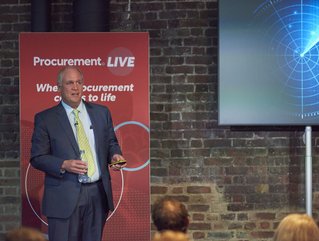Chains to networks marks the changing shape of supply

When back in the early 1980s, German physicist and business analyst Wolfgang Partsch first coined the term ‘supply chain’, no one could have imagined how the world might look in 2023.
The pandemic changed the nature of the global supply-and-demand economy, while geopolitical instability – Ukraine & Russia and China & the US – has changed its shape.
The challenge for today’s businesses is moving from the concept of a linear chain to the dynamic configuration of a network of companies and locations.
Some refer to this as networked supply, others call it the ‘demand response network’. But whatever term one applies, the reality is that supply chains are tech driven and comprise smart suppliers, plants and transportation companies, coupled with intelligent locations for placing products.
“Supply chain reinvention is in vogue” says Glenn A. Steinberg, EY Global Supply Chain Leader. The multiplicity of demands facing CSCOs is incredible. It used to be enough just to balance cost, service, quality and speed but now you need to add resilience and sustainability into your supply chain.”
Sustainability, visibility and resilience are coming to define the new standard for supply chain excellence in a world where, Steinberg says, “something broader is at play”.
“The world order is changing from a unipolar economic order to a multipolar one,” Steinberg continues. “This has a tremendous impact on the strategic architectures of the world’s supply chains. As a result, virtually every company in the world is re-evaluating their supply chain footprint, determining where best to place their physical assets such as manufacturing facilities, warehouses and more.”
Resilience is multifaceted and broad in nature, says Steinberg, who adds that end-to-end visibility is “foundational to a resilient supply chain”.
He adds that a key theme of resilience has emerged in the course of EY stress-testing clients’ supply chains, in order to uncover both vulnerability and opportunity.
“It’s about creating agile networks, by re-evaluating the geographical and strategic architecture of the supply chain,” he says.
He adds that, although it is a simple question to ask what should be local, regional or global, in a complex partner ecosystem “reconciling a network of warehouses, manufacturing plants, logistics, procurement and the other pillars of the supply chain is never easy”.
Steinberg cautions that building a trusted, secure supply network in an era where everything is interconnected by technology means “cybersecurity is paramount if a supply chain is going to be resilient”.
If trust in the cyber integrity of a supply network is vital then so to is trust among those who comprise the network.
Jonathan Colehower – Global Supply Chain Strategy Practice Lead at digital transformation specialist UST – says there is little doubt that modern supply chains are more network-based than in pre-pandemic times, and that this will require a mindset change among vendors.
Colehower points out that in traditional supply chains suppliers typically have visibility one layer up and one layer down.
But he says that traditional supply chains are set to become more like “private trading networks”, all of which will be “many-to-many trading networks that are permission-based”.
He adds: “This means you can turn visibility on and off, depending on who the actors are, because you don't want every supply chain actor to see what everybody else is doing.
“One of the biggest challenges for such networks will be trust. Will trading partners trust one another enough to share information?
Colehower feels it will take a “pioneer company” to help establish such trust-based networks.
He says: “It's going to take somebody who's comfortable and confident in that supply chain, who is willing to share, and who can actually demonstrate what the results are.”
Also with an eye on the future of supply chain, EY recently published a study based on interviews with 500 senior-level executives at organisations of more than US$1bn in revenue. The findings suggest 2025 will be the year that largely autonomous supply chains begin to replace the hybrid processes common today.
“We’re already on a path to an autonomous future,” says Steinberg. “We have self-driving cars, where people’s lives are at stake. There’s no reason we can’t have an autonomous and self-organising supply chain. In the end, it’s just about mastering the power of data.”
He adds: “We’re already doing projects to help clients get to their future state, to show them what the roadmap for a digitally networked and autonomous supply chain looks like.”
Steinberg points out that in today’s supply chains, changes in customer demand have to work back through the supply chain to get to the OEM [original equipment manufacturer], the supplier, to the supplier’s supplier, and all the way through the tiers. He says this means it can take months before businesses change their production plans according to demand figures.
This, he says, is precisely why supply chains are headed towards “digitally networked ecosystems with shared data in the cloud”.
Steinberg adds: “This way everyone can see what’s happening in the moment, and immediately adjust to real-time events, and even predict what happens next.
“Finally, we have all the tools and technologies at our fingertips to make this a reality. There has never been a better time to be a supply chain professional than right now.”







